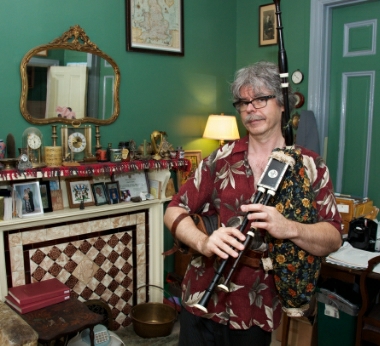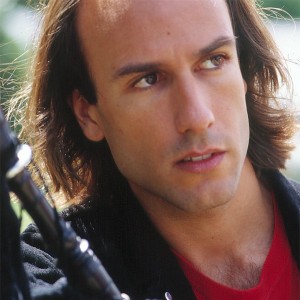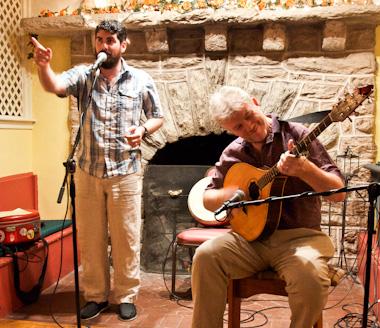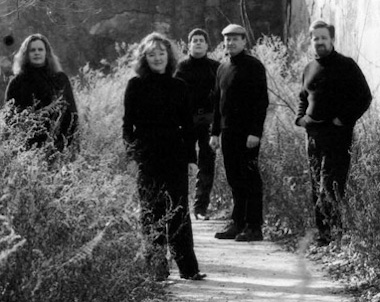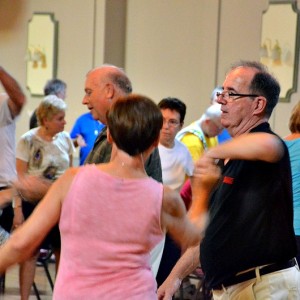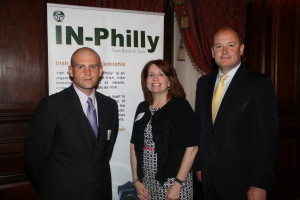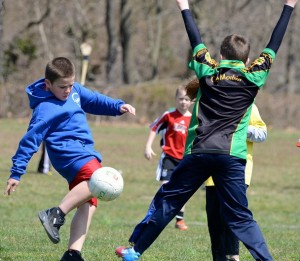Roxborough’s Charlie Rutan had a musician father and grandparents from Scotland who loved the music they grew up with, so there was always music—specifically bagpipe music–playing in the house . As a small boy, he was given a practice chanter and taught himself a few tunes.
Growing up though, he cycled through a veritable orchestra of woodwind instruments, from the sax to the oboe, which he still plays. Then, as a young man, he spent some time in Ireland and Scotland and something happened. “There was something in the air, something calling to me. Charlie boy, the pipes are calling.”
Uh-huh, he really said it.
And for the last 25 years, whenever someone needs a bagpiper, it’s Charlie Rutan they call. He’s the owner of Bagpipes FAO (For All Occasions), supplying solo and group pipers and pipe bands for every conceivable event from weddings and funerals to store openings and retirement parties. On the face of it, it doesn’t seem like a lucrative career choice, but you’d be surprised how busy a bagpipe business can be.
“A week doesn’t go by that I don’t do a funeral,” says Rutan, who, when he’s not at someone’s special occasion, plays with the Celtic fusion group Sylvia Platypus. He’s done gigs as far away as Iowa and Virginia, and has seen some strange things, but be assured that Rutan doesn’t bagpipe and tell. He won’t tell stories. Well, except for tales of the long and varied history of an instrument that you either love or hate.
About that: Let’s take a little detour to talk about the relationship between the hearing public and bagpipes. Aficianados say the sound of the pipes—what they call “haunting” is produced by what is basically an air supply, bag, chanter (the melody pipe), and drone (supplying the harmonizing note)— strike an emotional chord, eliciting pride, joy, grief, and, occasionally, the desire to march into battle, though the bagpipes’ martial side is a relatively new wrinkle. But haters will hate. One Internet survey finds that 35% of people hate bagpipes. Bagpipe jokes abound. One common one: Why do bagpipers walk when they play? Answer: To get away from the sound. Famous folk have even weighed in: Alfred Hitchcock once said that bagpipes were obviously invented by someone who’d seen a man carrying “an indignant asthmatic pig” under his arm.
As comic Rodney Dangerfield might have put it, bagpipes “don’t get no respect.”
And yet, says Rutan, who has a couple of dozen of them, there are “a plethora of bagpipes in every country in Europe, Northern Africa, the Urals, and the Middle East. In Italy, they have a different kind of bagpipe from one town to the next.”
And the bagpipe—which wasn’t invented in Scotland, despite what the Scots will tell you—is old. Ancient. There’s even something resembling small modern-day bagpipes in Italian frescos dating back to the 12th century. The Irish pipes–small, melodic instruments called uillean pipes (from the Gaelic piobai uillean, literally “pipes of the elbow” which describes how they’re inflated—pressed under the arm rather than inflated by the piper’s breath)–are a fairly recent entry into the “aerophone” genre. Uillean pipes may date back to the 17th century. They’re also enjoying a resurgence. “Over the past 20 or 30 years, the uillean pipe trade has blossomed,” says Rutan. “A whole new generation has discovered them,” says Rutan.
You’ll find bagpipes in all kinds of cultures, some that might surprise you, he says. “I frequently get calls from the city’s French-speaking Haitian community. Their tradition is to have bagpipes at their events.”
Rutan even has a French bagpipe to play when those occasions arise. He pulled it out for me when I visited him on one of those few windows-open days we’ve had this summer. Unlike the Highland pipes used by pipe and drum bands, the French pipes are small, slim and highly decorated. His has finely wrought inlays and a floral bag, like a home-sewn drawstring purse. Another set of pipes (Bohemian) is its antithesis—so basic, the bag looks exactly like what it once was: a goat. The pipes, chanter and drone fit nicely where head and legs once were. The pipes from Turkey, common in the Middle East, is simpler still; when he plays it, the reedy, high-pitched sound recalls the call to prayer from the mosque.
When Rutan pulls out the Breton pipe—from the Celtic part of Brittany—he takes a few steps backward before he puts the chanter to his lips. “You might want to cover your ears,” he warns, before coaxing the most godawful, small-animal-being-tortured-to-death sound from the tiny set of pipes. It’s the musical version of waterboarding. I found myself wondering what Rutan’s neighbors—who could hear it through the open windows—were thinking. I might call 911. See photos of all of the bagpipes mentioned here.
There’s so much variation in pipes because, says Rutan, “for a long time they were a one-off instrument, made in some guy’s garage, in his spare time, as a labor of love, with no plans and no set of measurements.”
Because bagpipes were always DIY, “some European pipes were almost lost after the second world war,” he explains. “All the metal was confiscated for the war effort and many of the men who made them had passed on.” In one region of Italy, makers buried bagpipes in the mountains and unearthed them after the war, taking time to teach the younger generation who’d grown up without them how to make, repair, and play them.
Though he doesn’t say it, the Italian pipes, the large zampogna–double chantered pipes that can play chords and melody with a deep-throated sound–seem like Rutan’s favorite. He uses them most often in the winter months since they’re part of Italian holiday festivals. “It was traditionally played by shepherds as they tended their flocks and was supposed to be the first music the Christ child heard,” Rutan explains. You can hear him play a tune on the zampogna here.
But the zampogna will be front and center on Sunday, August 4, as part of a ceremony marking the merger of St. Leo the Great Parish and Our Lady of Consolation Parish in Tacony. St. Leo is a traditionally Irish parish, and OLC, an Italian parish, “So we’ll have an Irish piper leading the parishioners of St. Leo’s toward OLC, then midway on Disston Street I’ll step in with the zampogna and take them the rest of the way. That’s an ‘only in Philadelphia’ event,” he laughs.
You can also catch Rutan with Sylvia Playpus on Saturday night at Fergie’s Pub, 1214 Sansom Street in Philadelphia, at Havana at 105 Main Street, New Hope on August 21, and at the Bethlehem Sands Casino in Bethlehem on September 7.
And of course, you can hire “one splendidly attired solo piper” or a a 5- or 8-piece “micro pipe band” for anything from a wedding to a parade to a backyard barbecue from Bagpipes FAO. Rest assured, that whatever happens there, stays there. Well, at least the piper won’t talk.

